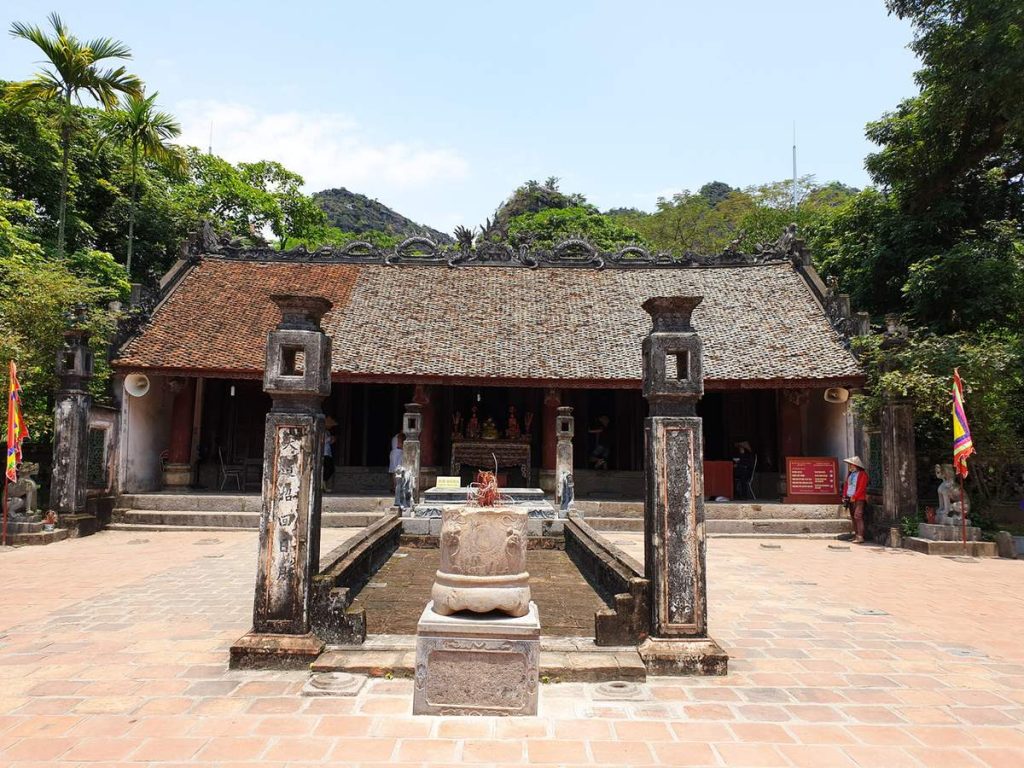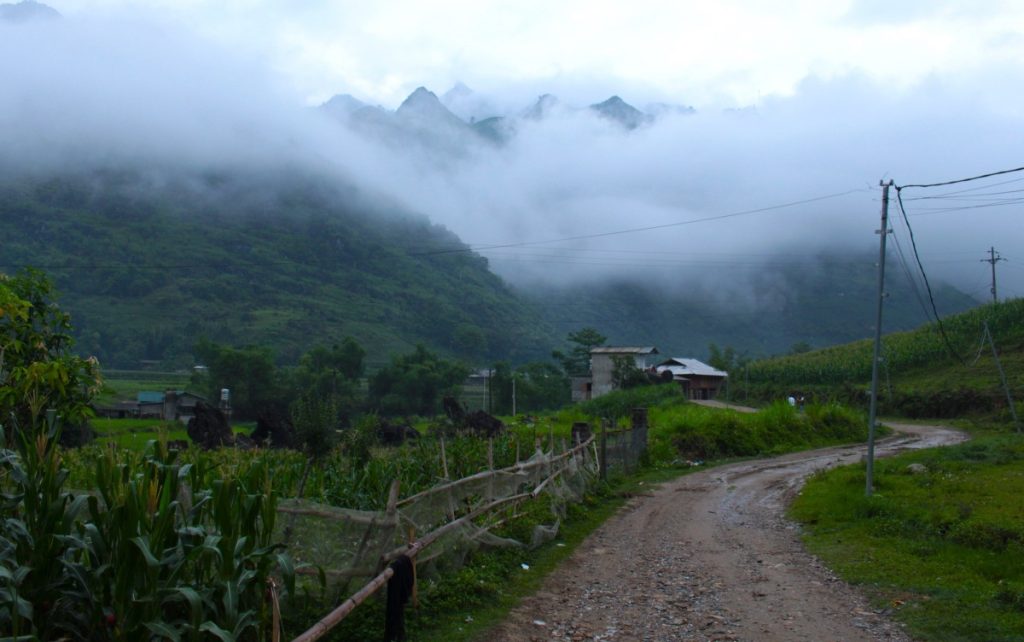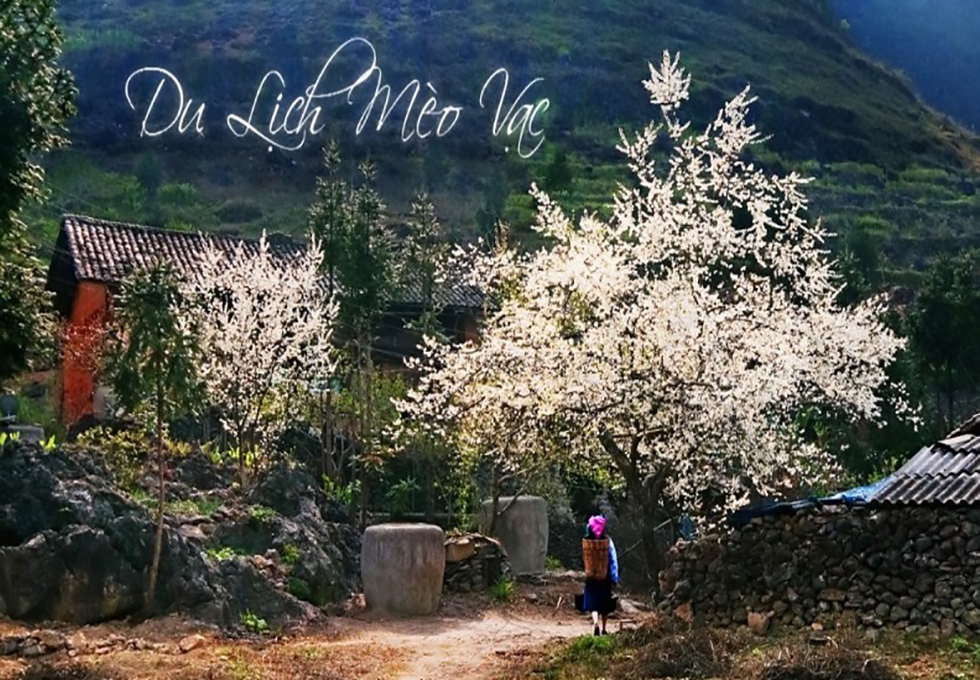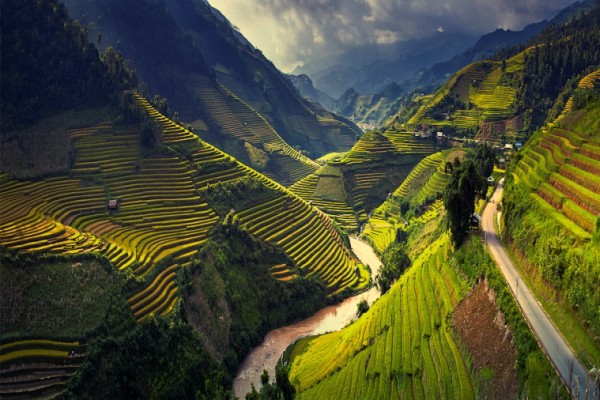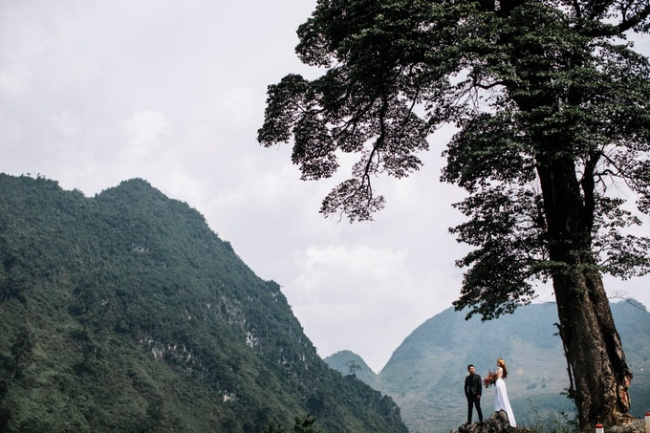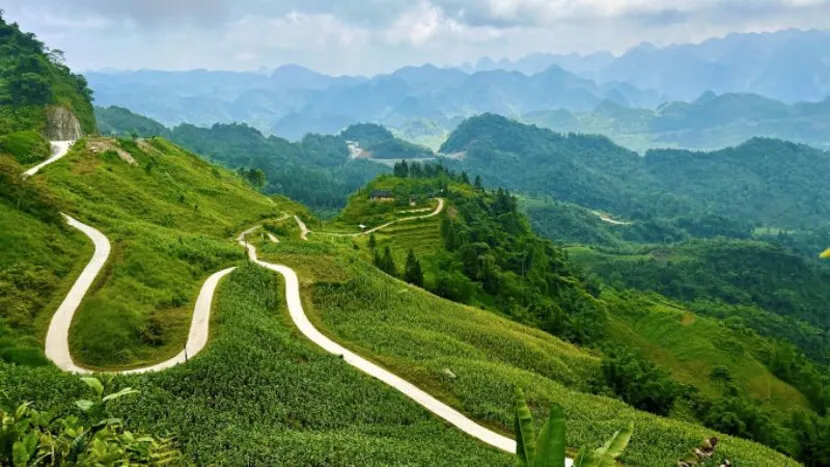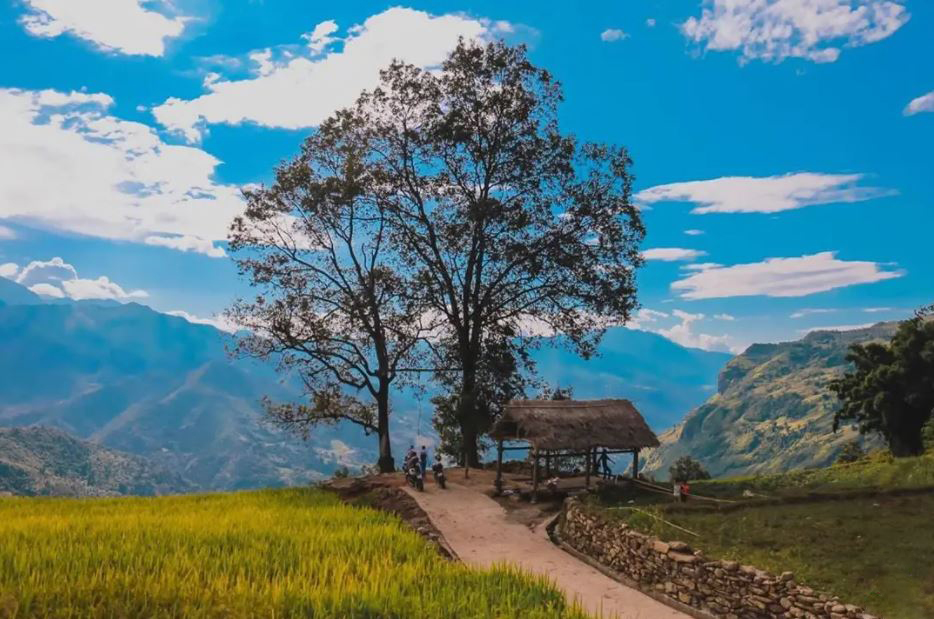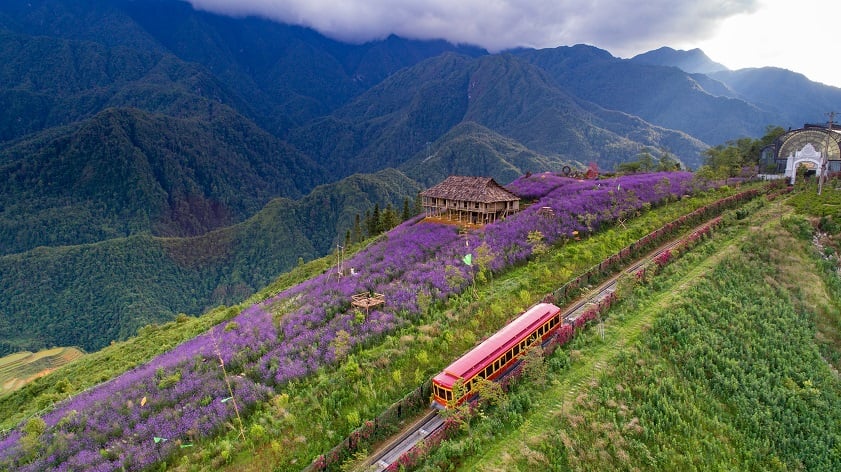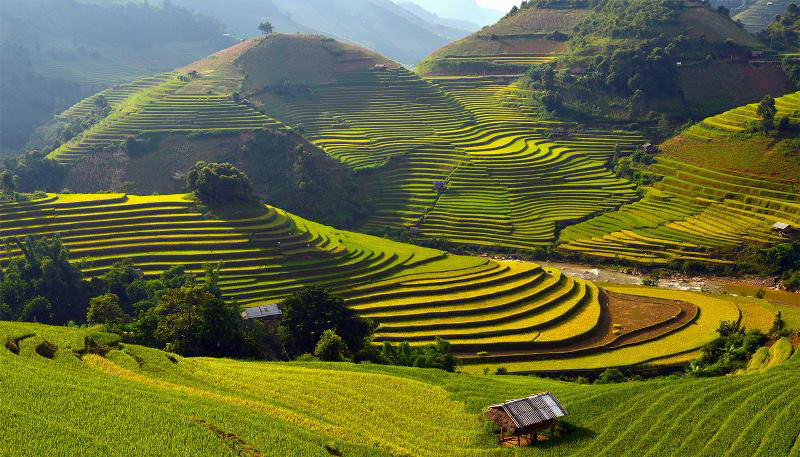Hanoi – A guide basic for the trip
Hanoi, Vietnam’s capital city founded over a millennium ago, boasts a rich historical legacy. Its labyrinthine Old Quarter, dating back to the 14th century, invites exploration along tree-lined lanes flanked by colonial architecture that whispers tales of bygone eras. Yet, Hanoi today transcends its storied past, blending ancient charm with modern vitality. Here, you’ll discover trendy cafes, top-tier restaurants, and vibrant art scenes that breathe new life into the ancient city. As night falls, the city pulses with a diverse array of nightlife options, from chic rooftop bars to lively bia hơi spots. For first-time visitors, these experiences encapsulate the essence of Hanoi—a city pulsating with ancient temples, bustling markets, and cultural vibrancy, rightfully earning its place as Vietnam’s cultural nucleus.
I. When is the best time to visit Hanoi Vietnam?
The best time to visit Hanoi, Vietnam, is during the dry season, which typically spans from October to April. Within this period, the months of October, November, March, and April are particularly favorable due to pleasant temperatures and lower humidity levels. Here’s a breakdown of the seasons in Hanoi:
- Autumn (October and November): Autumn is considered one of the best times to visit Hanoi. The weather is cooler and drier, with clear skies and comfortable temperatures ranging from around 20°C to 25°C (68°F to 77°F).
- Winter (December to February): Hanoi’s winter is relatively mild compared to northern climates, but it can still get chilly, especially in January and February. Daytime temperatures average around 15°C to 20°C (59°F to 68°F), and it can drop to around 10°C (50°F) or lower at night. This season is generally dry and offers clear skies.
- Spring (March and April): Spring is another excellent time to visit Hanoi. The weather starts warming up, and you can enjoy blooming flowers and festivals such as Tet (Vietnamese Lunar New Year, which usually falls in late January or February). Temperatures range from 20°C to 30°C (68°F to 86°F), and humidity remains relatively low.
The summer months (May to September) are characterized by high humidity, frequent rain showers, and occasional typhoons, especially in July and August. These conditions can make outdoor activities less enjoyable and travel more challenging due to the heat and humidity. In summary, for the best experience in Hanoi, aim to visit during the dry season from October to April, with October, November, March, and April being particularly pleasant months with comfortable temperatures and lower humidity levels.
II. What to see in Hanoi Vietnam
Hanoi, the capital city of Vietnam, is rich in history, culture, and vibrant street life. Here are some must-see attractions and places to visit in Hanoi:
- Hoan Kiem Lake (Lake of the Returned Sword): Located in the heart of Hanoi, this picturesque lake is surrounded by parks, gardens, and notable landmarks like the Ngoc Son Temple on a small island. It’s a popular spot for locals and tourists alike, especially in the early mornings and evenings.
- Old Quarter (Hoan Kiem District): The Old Quarter is a maze of narrow streets and alleyways dating back to the 13th century, each specializing in a particular trade or craft. It’s a fantastic place to wander around, shop for souvenirs, and sample street food.
- Ho Chi Minh Mausoleum and Complex: This monumental complex is dedicated to Vietnam’s revolutionary leader, Ho Chi Minh. It includes the mausoleum where his embalmed body is preserved, as well as the One Pillar Pagoda and Ho Chi Minh’s stilt house.
- Temple of Literature (Van Mieu Quoc Tu Giam): Vietnam’s first university, founded in 1070, is a beautifully preserved complex dedicated to Confucius. It features serene gardens, ancient pavilions, and stone stelae inscribed with the names of scholars.
- Hoa Lo Prison Museum: Known as the “Hanoi Hilton” during the Vietnam War, this museum provides a sobering look into the history of Vietnamese struggle for independence. It showcases exhibits on the French colonial period and the American POW experience.
- Vietnam Museum of Ethnology: Located a bit outside the city center, this museum offers fascinating insights into Vietnam’s ethnic diversity with exhibits on traditional clothing, crafts, and lifestyles of the country’s 54 ethnic minority groups.
- Water Puppet Theatre: Experience a traditional Vietnamese art form at the Thang Long Water Puppet Theatre, where puppeteers perform on a water stage accompanied by live traditional music.
- Hanoi Opera House: An architectural masterpiece, the Hanoi Opera House hosts regular performances of opera, classical music, ballet, and Vietnamese traditional music.
- West Lake (Ho Tay): One of the largest lakes in Hanoi, West Lake offers a peaceful escape from the hustle and bustle of the city. You can visit Tran Quoc Pagoda, the oldest pagoda in Hanoi, located on a small island in the lake.
- Dong Xuan Market: This bustling market in the Old Quarter is a great place to experience local life and shop for everything from fresh produce and clothing to souvenirs and household goods.
These are just a few highlights of what Hanoi has to offer. The city is also known for its vibrant street food scene, where you can try delicious dishes like pho (noodle soup), bun cha (grilled pork with noodles), and banh mi (Vietnamese sandwich). Exploring the city on foot or by cyclo (cycle rickshaw) is a great way to soak in its unique atmosphere and charm.
III. What street food to try in Hanoi?
Hanoi is renowned for its vibrant street food scene, offering a wide array of delicious dishes that you must try to get a true taste of the city’s culinary culture. Below are some essential street foods you should try in Hanoi:
- Pho: A quintessential Vietnamese dish, pho is a flavorful noodle soup consisting of broth, rice noodles, herbs (often cilantro and Thai basil), and either beef (pho bo) or chicken (pho ga). It’s typically served with lime, chili, and bean sprouts on the side.
- Bun Cha: Grilled pork patties (cha) and slices of pork belly (thit nuong) are served over a plate of vermicelli noodles (bun), along with fresh herbs, pickled vegetables, and a dipping sauce made with fish sauce, vinegar, sugar, and lime.
- Banh Mi: A Vietnamese sandwich made with a crusty French baguette, filled with various ingredients such as grilled pork, pate, Vietnamese sausage (cha lua), cilantro, cucumber, pickled carrots and daikon, and chili sauce. Banh mi is a perfect blend of French and Vietnamese flavors.
- Bun Thang: A delicate noodle soup featuring thin vermicelli noodles, shredded chicken, thin omelette strips, and sometimes pork sausage, all in a fragrant broth. It’s topped with fresh herbs like coriander and scallions.
- Banh Xeo: A crispy Vietnamese pancake made from rice flour, turmeric powder, coconut milk, and filled with shrimp, pork, bean sprouts, and herbs. It’s usually wrapped in lettuce or mustard leaves and dipped in a savory fish sauce.
- Cha Ca La Vong: A famous Hanoi specialty where chunks of marinated fish (often catfish) are grilled table-side with turmeric and dill, then served with rice noodles, peanuts, herbs, and shrimp paste sauce.
- Xoi Xeo: Sticky rice steamed with turmeric and topped with mung bean paste, fried shallots, and shredded chicken or pork floss. It’s often eaten as a hearty breakfast or snack.
- Goi Cuon: Fresh spring rolls filled with shrimp, herbs like mint and cilantro, vermicelli noodles, and sometimes pork slices, all wrapped in rice paper. They are served with a peanut dipping sauce.
- Egg Coffee (Ca Phe Trung): A Hanoi specialty where strong Vietnamese coffee is mixed with a creamy egg yolk and condensed milk froth. It’s served hot or cold and is a must-try for coffee enthusiasts.
- Che: Vietnamese sweet dessert soup made with a variety of ingredients such as beans, tapioca pearls, fruit, and coconut milk. It’s a refreshing treat often enjoyed as a dessert or snack.
These street foods can be found throughout Hanoi, especially in the Old Quarter and around popular markets. Trying these dishes not only offers a delicious culinary experience but also provides insight into Vietnam’s rich food culture and traditions.
By the way, a new beautiful place called Ha Giang loop which is very interesting, check this out: https://www.getyourguide.com/hanoi-l205/from-hanoi-3-day-ha-giang-loop-small-group-t739208
For Lan Ha Bay & Halong Bay trip, check this out: https://www.getyourguide.com/ha-long-l119790/from-ha-noi-2-day-lan-ha-ha-long-bay-5star-with-balcony-t739040/
Or https://www.tripadvisor.com/AttractionProductReview-g3737857-d28097153-Lan_Ha_Bay_Ha_Long_Bay_5_Stars_Private_balcony_2_days_trip-Tuan_Chau_Island_Halon.html

